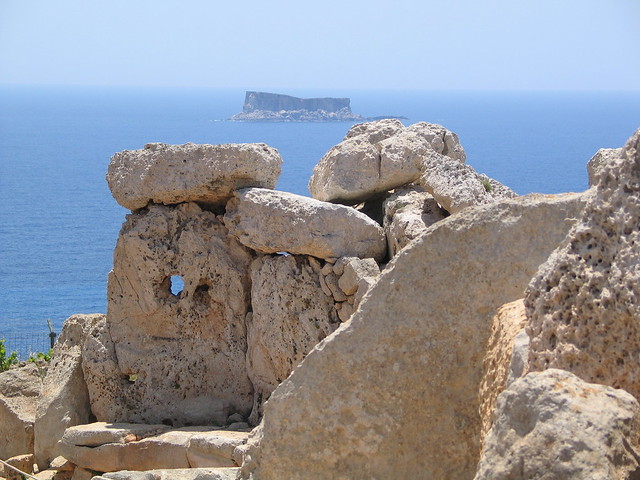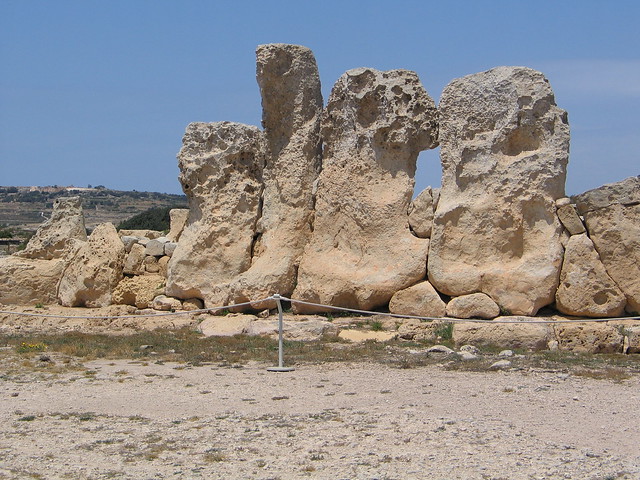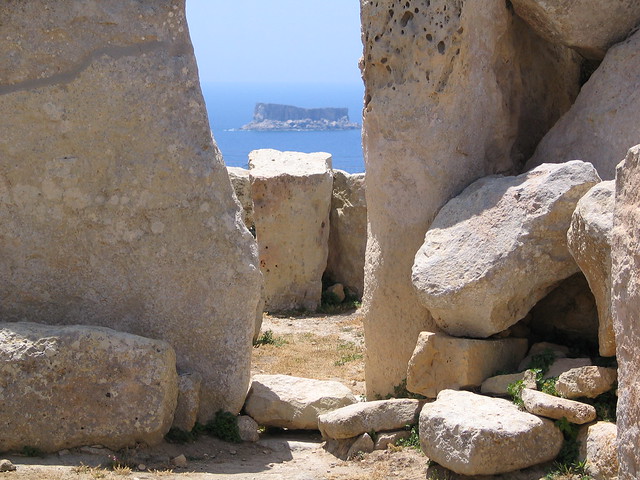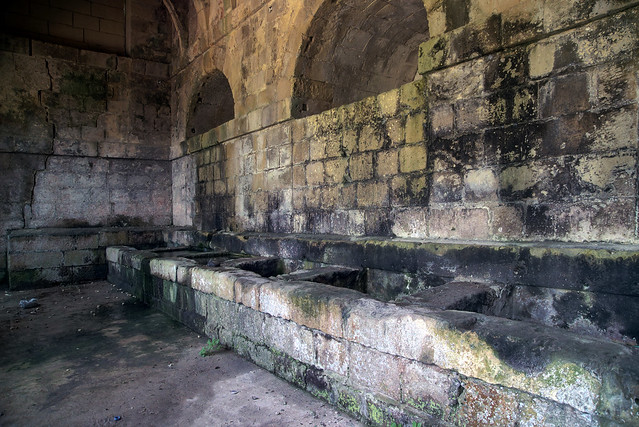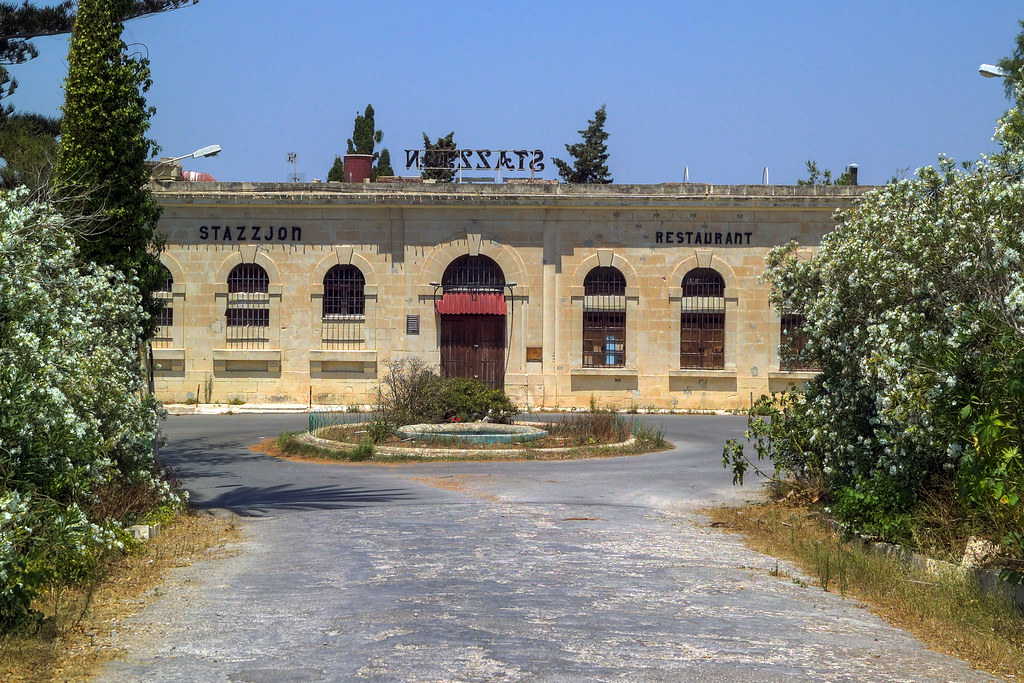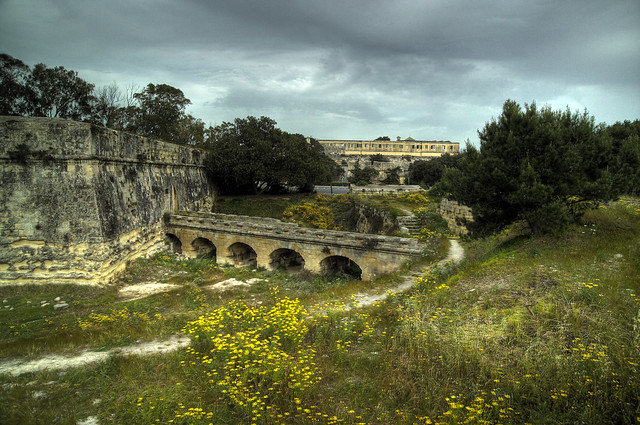A few years ago whilst fiddling around in Facebook, I came across a group called ‘The Malta Railway’ and was surprised to see that they had well over 1000 members! Not bad for a railway that has no tracks and hasn’t seen a train for over eighty years. I joined the group in the hope that I could find out a bit more about the remains of the railway system and particularly the tunnels at each end of the single track. See my earlier posts about the Malta railway here and here.
The entrances to the tunnel between Valletta and Floriana have been blocked for many years by chained iron gates and limestone blocks. I have read messages on the internet from people who have managed to find ways into the tunnel and have been sorely tempted to give it a try myself but… that would be trespassing (and anyway, I am far too fat to squeeze through the railings). Imagine my delight one day in September when I read an announcement from the Facebook group’s admin – Paul Galea, that he would be leading tours of the tunnel and Floriana station on the 23rd of October 2011. I booked my flight to Malta immediately.
When I got to the Floriana local council building for the 10.00 tour there was already a large crowd of people waiting. They were not your usual train spotters – not an anorak in sight despite the damp October weather.
First stop was the ticket office tucked away next to the Methodist Church. Here Paul Galea explained that the normal entrance to the station was via a door and a set of stairs that were now blocked off. We followed him down the ramps that offered alternative access and would have been reserved for military personel other ‘special cases’. As we made our way down towards the station level, it was clear that a great deal of debris and rubbish had been allowed to accumulate on the site over the last 80 years. It was also clear from the grafitti on the limestone walls that there had been a steady stream of ‘unofficial’ visitors to the station over the years.
The station area itself had been provided with fairly bright temporary lighting powered by a portable generator. Originally the entire station area would have been lit by candles!
Paul did a tremendous job explaining something of the history of the railway and of the station itself. At one stage during the talk when covering the wartime use of the station as an air raid shelter, an elderly gentleman interupted and explained that as a 10 year old, he was one of those who lived and slept in the tunnel during the war years. He told us how two rooms (behind the bricked up passage to the ticket office) were set aside as classrooms as teachers tried in vain to make their voices heard above the din of the people living in the tunnel. To be honest I am not much of a railway buff and this account of the station’s ‘human history’ was at least as interesting to me as the technical details of the steam trains and the rolling stock.
Not part of the original equipment but nevertheless impossible to ignore were the huge bundles of high tension electricity and telephone cables. Paul explained that the parts of the tunnel that were not accessible to the public were strewn with discarded cable drums and other debris. If the station was ever to be returned to it’s original appearance it would be an enormous (and expensive) job to conceal these cables . Personally, I doubt that anyone would have an deep enough pockets for this sort of work BUT I would love to be proved wrong.
After we had spent a while in the tunnel, we returned to the entrance and were shown the small magazine (with it’s own external access), which was used by the British military to guard the tunnel. It was from here also that ammunition could be loaded onto the train for transport to the Victoria Lines in the event of an invasion.
Beyond the magazine, the railway enters another short tunnel before emerging in the Notre Dame ditch. This section is not currently accessible and houses the remains of the wartime telephone switching equipment.
My thanks to Paul Galea and the Floriana local council for this unique opportunity to travel back in time. Perhaps one day we will see other parts of the Malta Railway opened to the public. I would love to walk underground from Floriana to Valletta or perhaps between Notabile and Museum Stations at the other end of the line!









